Be Marlboro: Targeting the World’s Biggest Brand at Youth
This page was last edited on at
In 2011, in Germany, Philip Morris International (PMI) launched a new mass media campaign to promote their re-vamped Marlboro brand. In 2012, PMI commented to investors that “Innovation is not only about launching new products. Importantly, it is also about thinking differently and innovating in the way we market our brands to adult smokers and trade partners.”1 ‘Marlboro Country’ and the synonymous Marlboro cowboy were replaced with a different approach. According to PMI, the new campaign was targeted at 18-24 year olds and centred around principles of inspiration and decisiveness, where the young are told ‘Don’t be a Maybe. Be Marlboro.’1
Image 1. Be Marlboro billboard Germany, screengrab from Frederic de Wilde PMI Investor Day presentation, June 2012
The campaign ran in 64 countries worldwide.2
Campaign Outline
The following information about PMI’s Be Marlboro campaign is sourced from a presentation by the tobacco company’s Senior Vice President of Marketing and Sales, Frederic de Wilde, at PMI’s 2012 investor day. 1
Billboards
In December 2011, campaign billboards appeared with a large black lettered ‘MAYBE’ written on a white background with the MAY crossed out with a red cross (Image 1). The billboards were not attributable to anyone. This was a deliberate omission as these ads were intended to act as a “teaser campaign” to arouse people’s interest.3
Subsequently, a few weeks later, the advertisements developed from this simple ‘maybe’ into ads offering two choices and the slogan ‘Don’t be a maybe. Be Marlboro’ (Images 2, 3 and 4). All images unless otherwise stated are sourced from Frederic de Wilde’s PMI Investor Day presentation, 2012.
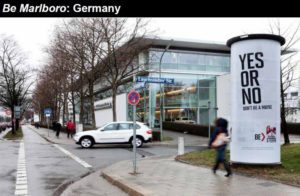
Image 2
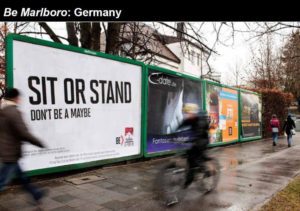
Image 3
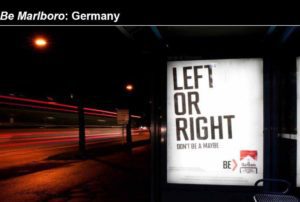
Image 4
According to PMI’s de Wilde, “Once the campaign concept was established, we started introducing image visuals to add emotional elements and anchor “Be Marlboro” in real situations.”3
De Wilde explained the concept of the youth-focused campaign by stating that “young adults feel overwhelmed by the flood of information and options that new technologies offer. In this time of uncertainty, they have very few life compasses that can provide them with guidance. With the new campaign, Marlboro encourages them to be decisive, trust themselves and follow their inspiration. The concept is very simple: there are three ways to react when faced with a decision: Yes, No, or Maybe. Marlboro does not believe in Maybes.”3
Accompanying each image in the gallery below is PMI’s intended take home message of each image as described by de Wilde.3
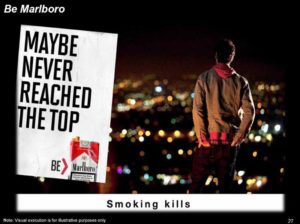
Image 5.“We recognize the value of becoming a self-starter”
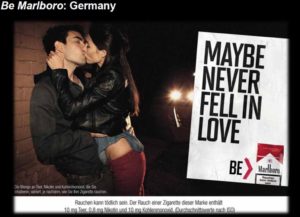

Image 6. “We also encourage adult smokers to demonstrate their true feelings”
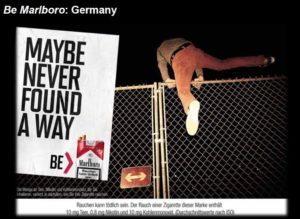

Image 7. “…metaphorically, find your way in life and don’t be held back by obstacles”
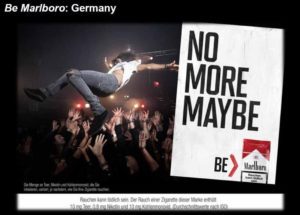

Image 8.“Trusting the others to share a common emotion is also something ‘Maybe’s’ would not consider”



Image 9.“Reaching the top to live the moment just depends on your decisiveness”
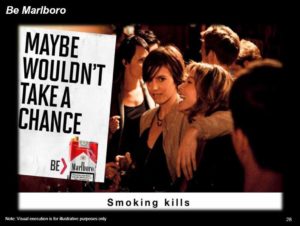

Image 10. “Communicate and take your chances, don’t hesitate it’s up to you”
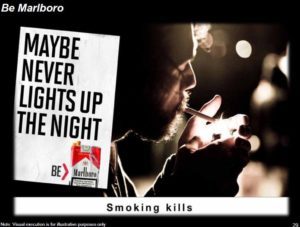

Image 11.“Savour every moment even the simple ones”
According to PMI, these campaigns were explicitly aimed at legal age smokers between 18 and 24. Organisations promoting health in Germany such as the German Cancer Research Centersic and ‘Forum Rauchfrei’ (Smoke-free Forum) do not agree, their counter response is described in the ‘Public Health Community’s Response’ section below.
Cinema Commercials
To accompany the billboard media in Germany, PMI also ran two adverts on the big screen in cinemas. An internet search for ‘Be Marlboro adverts’ produced a number of Be Marlboro ads. It is not known which, if any, of these examples were run in Germany. Three adverts of similar style but different content were found in the English language and two in Ukrainian. None were in German; although this does not mean that these ads could not have been aired in Germany as the billboard campaign was presented in English. The English ads were located on Vimeo and the Ukrainian on You Tube. Whilst the ads were still available at the time of writing, they were subsequently removed from the public domain.
In a now removed online video of an English language Be Marlboro ad, posted on the Vimeo site on 8th May 2012 by the production agency Indonesia Kreatif, a breaking dawn is shown and a male voiceover says:
“No poems finished, no mountains climbed, oceans crossed, no freedom won, no city lights, no love letters, this world would be nothing if we just said maybe, so let it out, set it free. Don’t be a maybe. Be Marlboro.”4
Throughout the ad, there are images of young attractive people taking part in inspirational activities.
Another posted on 8th November 2011(and subsequently removed), by Avenida Films, a Columbian production company which specialises in cinema advertising, has no voice over other than a ‘Be Marlboro’ statement at the end. The ad, backed by a thumping dance ‘chill-out’ track, featured images of young, attractive and healthy-looking men and women having fun, swimming and diving, travelling, dancing around a campfire on the beach, dancing in clubs and posing for group pictures together.5 A third English language Be Marlboro ad (no longer available) posted by Palermo Films S. A., an ad agency with a base in both Argentina and Uruguay, shows similar images to the other ads; young people having a good time. The voice over says,
“Be real, be free, be fearless, be inspiration, be celebration, be everything you are, and everything you wanna be. Be Marlboro.”6
Promotional Events
In Germany, there is evidence to suggest that the Be Marlboro campaign was promoted in specialist club nights. It is known that some of these parties were held in a secret location, with people receiving VIP tickets weeks before the party and told of a time, date and meet location. Don’t be a Maybe parties are known to have occurred in Stuttgart, Munich, Frankfurt, Hamburg and Cologne (Image 12).78910 11 From the meeting point party goers were transported (by coach) to another venue where an elaborate DJ set with Marlboro branding was waiting. Big LED screens flashed up the Be Marlboro message of Don’t Be a Maybe. Be Marlboro (Image 13). At the parties, attendees were given drinks vouchers and attractive young brand ambassadors dressed in the Marlboro brand colours handed out free Marlboro cigarette samples. Similar parties were organised by PMI in Switzerland (Image 14).12
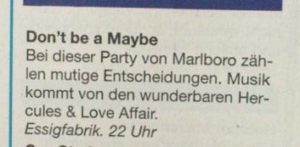

Image 12. “At this Marlboro party, courageous decisions count.” Don’t be a Maybe Party Cologne, Prinz Cologne Magazine, June 2012
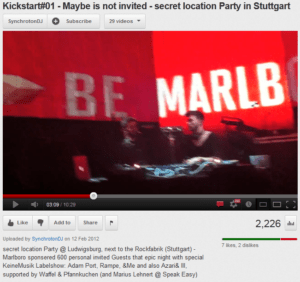

Image 13. Don’t be a Maybe Party Stuttgart, screengrab of a You Tube video made by a party goer
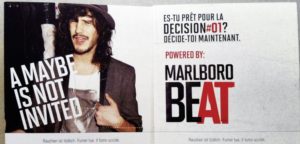

Image 14. Werbung und Verkaufsförderung an Privatanlässen, L’Observatoire: Projekt zur Beobachtung der Marketingstrategien für Tabakprodukte, 2012
Public Health Response
Image 15. Indoor Kiosk advertising, Forum Rauchfrei, August 2012
- target young people;
- make any statements that the inhalation of tobacco smoke is worthy of emulation;
- make any claims on health;
- provide misleading information;
- make any reference to ‘natural’ nature of ingredients.
It is arguably the case that, with its Be Marlboro campaign content, PMI violated at least two of these content rules. Firstly, the advertisements are explicitly targeted at young people. De Wilde stated that it was targeted at youth between 18 and 24.3 What is not clear however, is how PMI could ensure that these ads appeal only to their target audience, namely ‘Legal age smokers’, and not to youngsters under the age of 18. The use of young, attractive models in addition to the use of hedonistic slogans are likely to appeal to youth in general. Secondly, the billboard with the slogan ‘Maybe never lights up the night’ (Image 11) arguably promoted emulation of smoking behaviour.
In response to pressure from the German Cancer Research Center along with the University of Hamburg, as well as the advocacy group ‘Forum Rauchfrei’14, Philip Morris withdrew its billboards and cinema ads. However, information from Forum Rauchfrei suggests that the Be Marlboro campaign was still visible at the point of sale (Image 15).15 and that the withdrawal was only temporary. In tobacco shops and service stations back lighted Marlboro wall displays adorned the tobacco kiosks at the point of sale and branded change trays were used when giving customers change in these locations. Furthermore, electronic change trays that can display digital adverts have been used. The German Cancer Research Center said that the Be Marlboro campaign was shown on these electronic change trays
A report by the Campaign for Tobacco-Free Kids published in collaboration with the Alliance for the Control of Tobacco Use Brazil, Corporate Accountability International, Framework Convention Alliance, InterAmerican Heart Foundation, and Southeast Asia Tobacco Control Alliance heavily criticised PMI for illegally targeting teens,16 drawing global attention to the issue.171819
Legal challenges
Legal challenges were raised against the campaign in Brazil, Guatemala, Germany and Switzerland.
Even though German authorities outlawed the campaign in October 2013 for illegally encouraging smoking in young people (ages 14-21), PMI continued to roll out its campaign in low and middle income countries.20 In August 2014, the consumer protection agency from the Brazilian state of São Paulo fined PMI fined over $480,000 for violating the Brazilian Advertising Self-Regulation Code.21
In Switzerland, the advocacy group Oxyromandie filed complaints against the Be Marlboro campaign to the Swiss Commission for Fairness in Commercial Communication, a self-regulatory body which PMI is a member of. The complaints were dismissed and no action was taken.22
In Colombia, civil society complaints called on the Superintendent of Industry and Commerce to ban PMI from running the Be Marlboro campaign and sanction them for violating the country’s tobacco advertising ban. PMI removed the promotional videos in question but no penalties ensued.1623
In October 2015, a German court overturned the ban on the Be Marlboro campaign on the grounds that the wording did not explicitly indicate a focus on an underage population.24
Be Malboro Violates Voluntary Agreements in Germany and Article 13 of the FCTC
Since the 1960s in Germany, advertising restrictions have resulted from a series of voluntary agreements with the tobacco industry. In 1993 as the Ministry of Health in Germany announced that as part of a voluntary agreement, the tobacco industry would not, amongst a long list of other restrictions, produce advertising with models under the age of 30 and would not include images of activities that are typical of young people.25 It is disputably the case that the models used in the Be Marlboro billboard ads and certainly in the cinema ads appeared younger than 30 years of age and are engaged in activities that people younger than this age threshold take part in.
Furthermore, although tobacco advertising in certain forms is currently permitted in Germany, as signatories of the World Health Organisation’s, Framework Convention on Tobacco Control (FCTC), the world’s first global health treaty, Germany is obliged to take steps prohibit tobacco advertising in line with Article 13. The guidelines providing advice for the implementation of Article 13 recommend that:
“A comprehensive ban on tobacco advertising, promotion and sponsorship, should cover:
- all advertising and promotion, as well as sponsorship, without exemption;
- direct and indirect advertising, promotion and sponsorship;
- acts that aim at promotion and acts that have or are likely to have a promotional effect;
- promotion of tobacco products and the use of tobacco;
- commercial communications and commercial recommendations and actions;
- contribution of any kind to any event, activity or individual;
- advertising and promotion of tobacco brand names and all corporate promotion; and traditional media (print, television and radio) and all media platforms, including Internet, mobile telephones and other new technologies as well as films.”26
In Germany, the German Cancer Research Center made Germany’s contradictory position clear – Germany have ratified the FCTC but yet tobacco advertising still persists.13
After Be Marlboro came you DECIDE
In February 2016, Be Marlboro was followed up by a new ‘you DECIDE’ campaign which was also launched in Germany.27
The new campaign was celebrated within the marketing industry for supposedly mending the harm caused by the controversial Be Marlboro campaign.28 The new campaign is similarly sleek in design, features attractive young people and slogans such as “Will you stay real?” and “Is the sky the limit?”.29 Senior Vice President Marketing & Sales, Werner Barth, presented three images of this new advertising campaign on the PMI Investor Day in September 2016 (images 16-17).30


Image 16
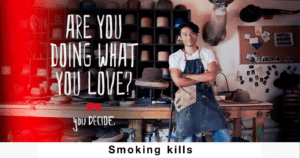

Image 17
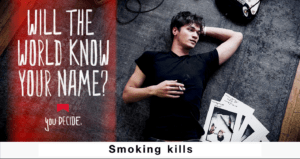

Image 18
In contrast to Be Marlboro, you DECIDE does not feature any cigarette packs and, hence, no pictorial health warnings. It has been suggested that this decision came in anticipation of the large pictorial health warnings which were set to be introduced in Germany in May 2016.2831 Both Be Marlboro and you DECIDE were conceived by the advertising agency Leo Burnett which has worked with PMI since they created the Marlboro Man campaign in 1954.2832
TobaccoTactics Resources
Other pages on tobacco company marketing: